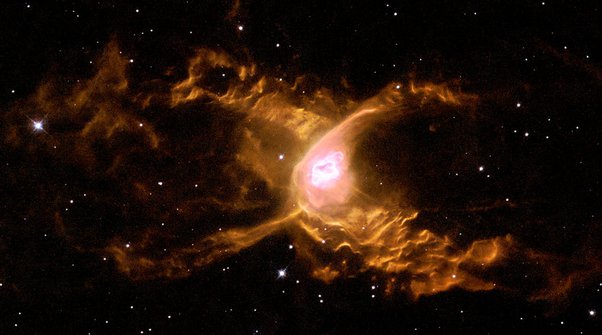The Universe’s Fiery Furnace: Unveiling the Hottest Known Places
Our Sun, a blazing inferno at nearly 15 million degrees Celsius, might seem like the ultimate embodiment of heat. However, venturing beyond our solar system, we discover celestial phenomena that dwarf even our star’s scorching temperatures. This comprehensive guide explores the contenders for the title of hottest things in the known universe, venturing into the realm of extreme heat and mind-boggling physics.
Stellar Superlatives: The Fiery Furnaces Among Stars
-
Massive Stars in Their Final Act: While all stars are incredibly hot, nearing the ends of their lives, some massive stars enter a dramatic finale called a supernova. During this colossal explosion, the star’s core temperature can soar to unimaginable heights – around 100 billion Kelvin (over 180 billion degrees Fahrenheit). This scorching inferno powers the supernova, releasing a phenomenal amount of energy that can outshine entire galaxies for brief periods.
-
Neutron Stars: Cinder-like Remnants: Following a supernova, the leftover stellar core condenses into an incredibly dense object called a neutron star. Despite being no larger than a city, a neutron star packs the mass of our Sun. This immense density leads to a scorching surface temperature, estimated to be in the billions of degrees Kelvin.
These celestial powerhouses are the undisputed champions in the stellar heat category, showcasing the universe’s capacity for unimaginable temperatures.
Beyond Stars: The Realm of Exotic Physics
Our exploration of cosmic heat extends beyond the realm of stars. Here, we encounter even more mind-bending phenomena:
-
Quark-Gluon Plasma: The Primordial Soup: Rewind time to just after the Big Bang, the universe was an unimaginably hot and dense soup of elementary particles. This theorized state of matter, called quark-gluon plasma, is believed to have existed for a fraction of a second at temperatures exceeding 5 trillion degrees Kelvin (over 9 trillion degrees Fahrenheit). Scientists recreate this environment in miniature at particle accelerators like the Large Hadron Collider, allowing us to glimpse the universe’s fiery beginnings.
-
Black Holes: The Gates of Oblivion: Black holes are regions of spacetime with such immense gravity that not even light can escape their clutches. While the event horizon, the boundary of a black hole, doesn’t possess extreme temperature itself, the matter swirling around a black hole can reach millions of degrees due to friction and intense gravitational forces. Additionally, some theoretical models suggest even hotter temperatures exist near the black hole’s singularity, the point of infinite density at its center.
These exotic phenomena push the boundaries of our understanding of physics and heat, offering a glimpse into the universe’s most extreme environments.
The Heat is On: Unveiling the Mechanisms Behind Extreme Temperatures
Understanding the mechanisms behind these scorching temperatures is vital:
-
Nuclear Fusion: In stars, the process of nuclear fusion, where lighter atomic nuclei combine to form heavier ones, releases tremendous amounts of energy as heat. In massive stars nearing supernova, this process intensifies, leading to the extraordinary core temperatures.
-
Gravitational Compression: In neutron stars and black holes, immense gravitational forces compress matter into incredibly dense states. This compression creates tremendous internal pressure, manifesting as scorching temperatures.
-
Particle Collisions: In the case of quark-gluon plasma, the collision of fundamental particles at near light speed generates enormous amounts of energy, translating into extreme temperatures.
Comprehending these mechanisms allows us to appreciate the relationship between fundamental physical processes and the universe’s hottest phenomena.
The Quest for Knowledge: Exploring the Universe’s Extremes
The pursuit of knowledge about the hottest places in the universe is an ongoing endeavor:
-
Technological Advancements: New telescopes and space probes continuously enhance our ability to observe and measure celestial phenomena. These advancements might reveal even hotter objects or environments previously undetected.
-
Theoretical Physics: As our understanding of physics expands, new theories might emerge that shed light on even more extreme states of matter and heat not yet conceived.
-
Laboratory Experiments: Particle accelerators like the Large Hadron Collider allow scientists to recreate conditions similar to the early universe, providing valuable insights into the nature of extreme heat and exotic matter.
The exploration of the universe’s hottest places is a testament to human curiosity and our relentless drive to understand the cosmos.
FAQ: Frequently Asked Questions About the Hottest Things in the Universe
- What is the hottest thing ever recorded?
The hottest temperature ever directly recorded was achieved at the Large Hadron Collider, where scientists recreated quark-gluon plasma with temperatures exceeding 5 trillion degrees Kelvin.
- Is the Sun the hottest thing in our solar system?
While the Sun is incredibly hot, the hottest object in our solar system is likely the corona, the Sun’s outermost layer.






More Stories
Where to Watch USMNT vs Jamaica National Football Team
How I Met My Monster
How Should a Ring Fit